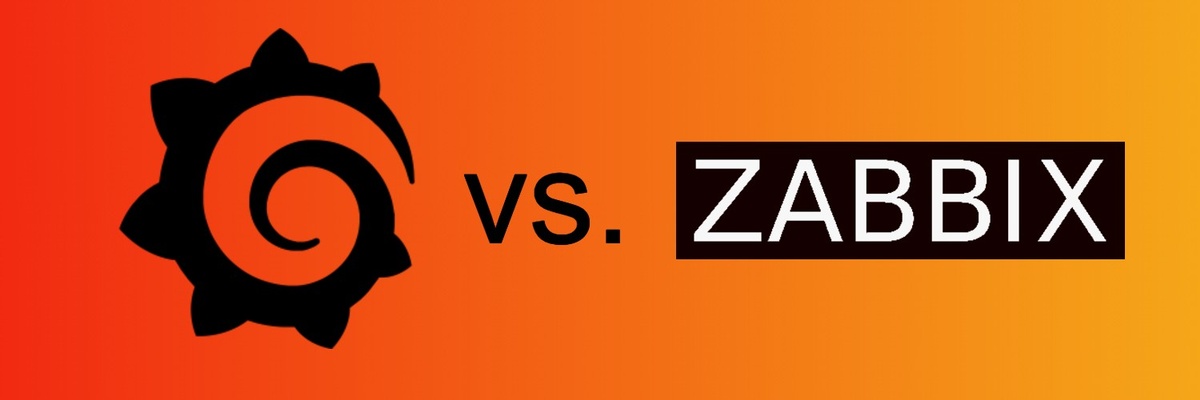Zabbix vs Grafana: A Comparison of Monitoring and Visualization Tools
Zabbix and Grafana are two popular open-source monitoring tools used for monitoring and visualization of IT infrastructure. Zabbix is an all-in-one monitoring solution, while Grafana is a data visualization platform. In this blog, we will compare Zabbix and Grafana on several parameters to help you choose the right tool for monitoring and visualization of your IT infrastructure.
Functionality:
Zabbix is an all-in-one monitoring solution that offers a wide range of monitoring options, including network, server, application, cloud, and virtualization monitoring. It provides real-time monitoring, alerting, and reporting capabilities. Zabbix comes with a web-based interface that provides a unified view of the entire IT infrastructure.
On the other hand, Grafana is a data visualization platform that provides customizable dashboards and graphs for visualizing data from different sources. Grafana supports a wide range of data sources, including databases, cloud services, and APIs. It provides real-time visualization of data and supports alerting and reporting capabilities.
Ease of Use:
Zabbix has a steeper learning curve compared to Grafana. It requires some technical expertise to set up and configure the monitoring system. Zabbix provides a web-based interface for configuration and monitoring, but the interface can be overwhelming for new users.
Grafana, on the other hand, has a user-friendly interface that is easy to navigate. It provides a drag-and-drop editor for creating dashboards and graphs. Grafana also has a large community of users who contribute to its documentation and provide support to new users.
Alerting:
Zabbix has a powerful alerting system that allows users to define triggers based on predefined thresholds or custom expressions. The alerting system can send alerts via email, SMS, or other notification channels. Zabbix also provides escalation policies, which allow users to define a sequence of actions to be taken when an alert is triggered.
Grafana also provides alerting capabilities, but they are not as advanced as Zabbix. Grafana allows users to define alerts based on thresholds, but it does not support custom expressions. Grafana can send alerts via email, Slack, or other notification channels.
Customization:
Zabbix provides a wide range of customization options, including custom scripts, user-defined templates, and custom dashboards. Users can create custom scripts to monitor specific applications or services that are not supported out-of-the-box. Zabbix also allows users to define custom templates for monitoring specific devices or services.
Grafana provides extensive customization options for dashboards and graphs. Users can create custom dashboards and graphs using a wide range of visualization options, including pie charts, line charts, and heat maps. Grafana also supports custom plugins, which allow users to add new data sources or visualization options.
Scalability:
Zabbix is a highly scalable monitoring solution that can monitor thousands of devices and services. Zabbix uses a distributed architecture, which allows users to scale the monitoring system horizontally by adding new servers.
Grafana is also scalable, but it requires some additional configuration to scale to larger deployments. Grafana can be scaled horizontally by adding additional servers, but it requires a load balancer to distribute traffic.
Community Support:
Both Zabbix and Grafana have large and active communities of users who contribute to their documentation and provide support to new users. Zabbix has been around longer and has a larger user base, which means more community support and resources.
Grafana, on the other hand, has a more active and growing community due to its popularity among developers and data analysts. Grafana also has a large number of plugins and integrations with other tools, which make it a popular choice for data visualization.
Conclusion
Zabbix and Grafana are both powerful tools for monitoring and visualization of IT infrastructure. Zabbix is an all-in-one monitoring solution that provides real-time monitoring, alerting, and reporting capabilities. It has a steeper learning curve and requires some technical expertise to set up and configure.
Grafana, on the other hand, is a data visualization platform that provides customizable dashboards and graphs for visualizing data from different sources. It has a user-friendly interface and extensive customization options for dashboards and graphs.
When choosing between Zabbix and Grafana, it is important to consider your specific needs and requirements. If you need a comprehensive monitoring solution with advanced alerting and reporting capabilities, then Zabbix may be the right choice for you. If you need a data visualizationplatform with extensive customization options and a user-friendly interface, then Grafana may be the right choice for you. Ultimately, both tools have their strengths and weaknesses, and it is important to evaluate them based on your specific use case to make the right choice.

